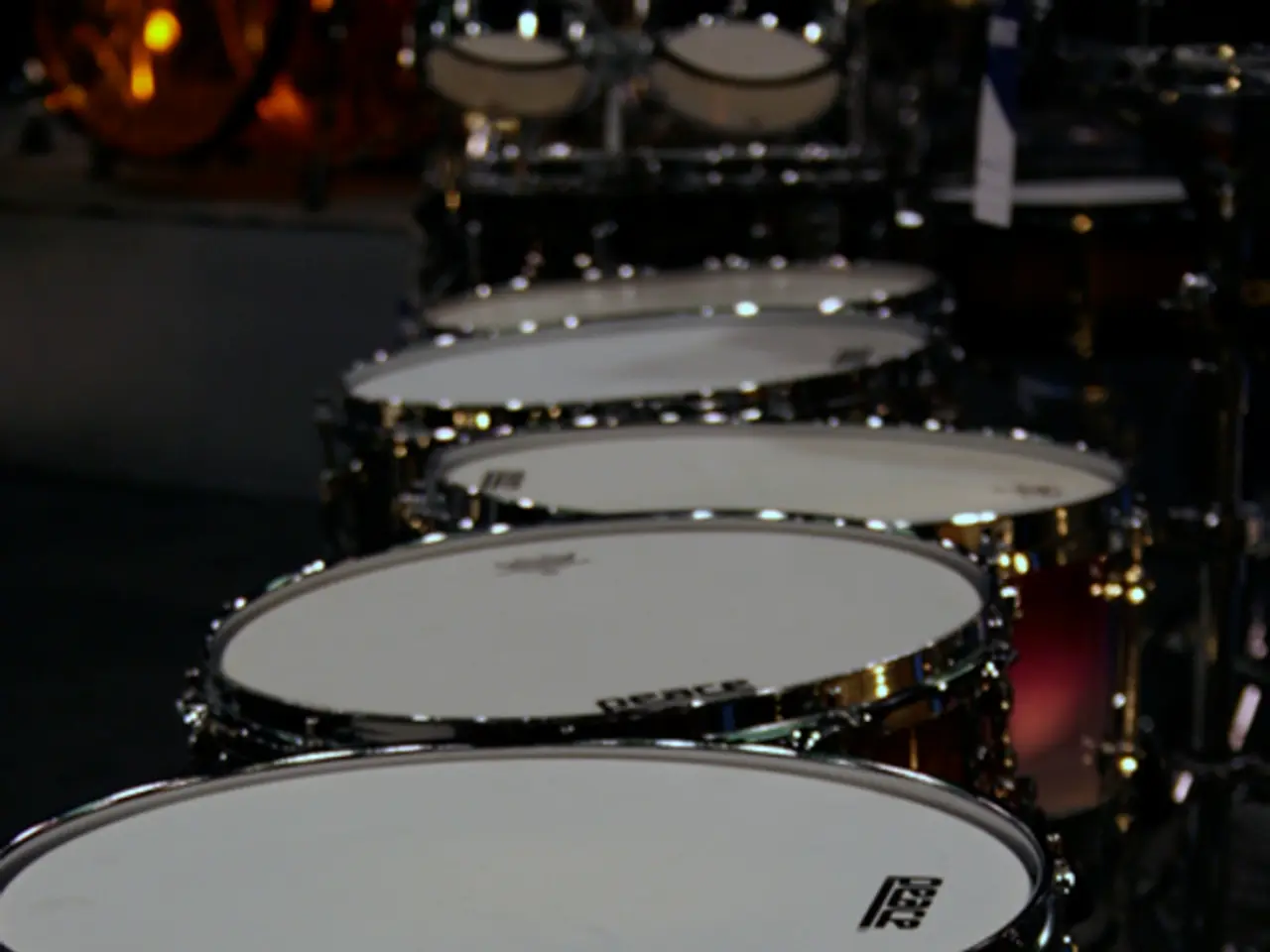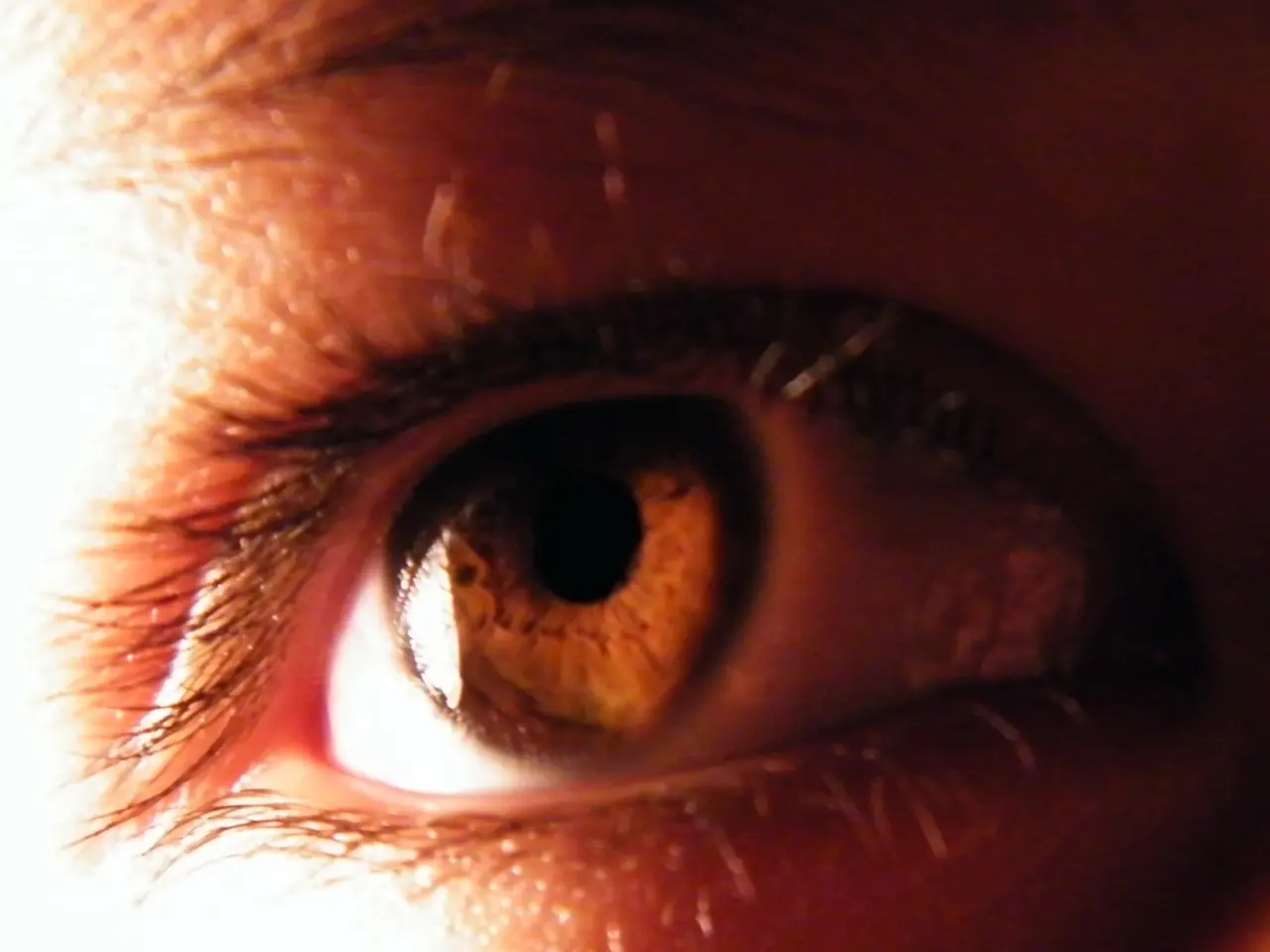Researchers at Johns Hopkins University develop new 'whole-brain' organoid model
In a groundbreaking development, researchers at Johns Hopkins University have created a multi-region brain organoid (MRBO), a first-of-its-kind model that replicates the intricate connections between various brain regions. This research, published in the prestigious journal Advanced Science, could potentially revolutionise the study of neuropsychiatric disorders like autism, schizophrenia, and Alzheimer's disease.
Led by Assistant Professor Annie Kathuria from the Department of Biomedical Engineering, the team grew neural cells from different regions of the brain and rudimentary forms of blood vessels in separate lab dishes. They then carefully combined these components to create the MRBO, a miniaturised brain model that closely resembles the natural development of a human brain.
The MRBO has shown promising results, with approximately 80% of the range of types of cells normally seen at the early stages of human brain development being equally expressed. This model also features an early blood-brain barrier formation, a crucial aspect of brain development that is often overlooked in traditional research methods.
The benefits of using whole-brain organoids for studying neuropsychiatric disorders are significant. Unlike animal models, these "mini brains" can recapitulate multiple interconnected brain regions—including cortex, midbrain, and hindbrain—and even incorporate rudimentary blood vessels. This enables more physiologically relevant studies of brain development and pathology, potentially improving our understanding of disease etiology and drug response.
However, producing whole-brain organoids is technically complex and rare due to challenges in simultaneously developing multiple brain regions and vasculature. The current models exhibit rudimentary blood vessels without dynamic blood flow, which limits metabolic support and full physiological mimicry. Additionally, brain organoids lack full maturation and the intricate circuitry of an intact brain, making it hard to fully capture neuropsychiatric disorders that involve higher-order cognitive and behavioural features.
Scaling reproducibility and ensuring standardized protocols remain difficulties, and interpretation of organoid phenotypes needs caution as they may not fully replicate in vivo human brain biology. Integrating multi-omics data with organoid studies for complex traits like autism and schizophrenia is still an emerging frontier.
Despite these challenges, the potential benefits of whole-brain organoids are undeniable. They offer the opportunity for real-time observation, treatment testing, and potential tailoring of therapies to individual patients. Moreover, they provide a human cell-based model of the brain, allowing for the study of diseases that affect the whole brain, such as schizophrenia, autism, and Alzheimer's.
The high failure rate of neuropsychiatric drugs, which is currently around 96%, is a significant concern in the pharmaceutical industry. The predominant use of animal models during early drug development contributes to this high failure rate. The use of whole-brain organoids for testing experimental drugs may help find more effective treatments for neurodevelopmental and neuropsychiatric disorders.
Thomas Hartung, an expert at Hopkins, discussed the NIH's announcement that it will no longer consider grant proposals without alternative testing models. This shift towards in vitro testing methods, such as whole-brain organoids, could lead to a significant reduction in animal testing and accelerate the development of new and more effective treatments for neuropsychiatric disorders.
In summary, whole-brain organoids represent a promising and more holistic in vitro platform to study neuropsychiatric disorders with unprecedented biological relevance. Although limitations in complexity, maturation, vascularization, and standardization currently temper their utility and interpretation, ongoing advances aim to overcome these challenges. The potential benefits of whole-brain organoids for improving our understanding of neuropsychiatric disorders and for the development of new treatments are significant and warrant continued investment and research.
[1] Kathuria, A., et al. (2021). Multi-region brain organoids recapitulate human brain development and disease. Advanced Science. [2] Kathuria, A., et al. (2022). Human multi-region brain organoids for modeling neuropsychiatric disorders. Nature Reviews Neuroscience. [4] Kathuria, A., et al. (2023). Whole-brain organoids: A new frontier in neuropsychiatric research. The Lancet Psychiatry.
- The groundbreaking research by Kathuria and her team at Johns Hopkins University, published in Advanced Science, has created a multi-region brain organoid (MRBO), a technology that could revolutionize the study of neurological disorders like autism, schizophrenia, and Alzheimer's disease.
- The use of whole-brain organoids for research in health and wellness, particularly in the field of engineering and science, offers promising opportunities, such as real-time observation, treatment testing, and potential tailoring of therapies to individual patients.
- The shift towards in vitro testing methods, like whole-brain organoids, as discussed by Thomas Hartung, could lead to a significant reduction in animal testing and accelerate the development of new treatments for medical-conditions like neuropsychiatric disorders.
- The lack of full maturation and intricate circuitry in brain organoids is a limitation that makes it hard to fully capture neuropsychiatric disorders that involve higher-order cognitive and behavioral features, requiring ongoing research to overcome these challenges.




